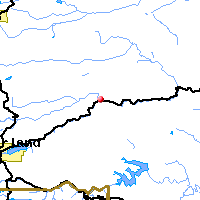Alkalinity refers to how well a water body can neutralize acids. Alkalinity measures the amount of alkaline compounds in water, such as carbonates (CO3 2-), bicarbonates (HCO3 -), and hydroxides (OH-). These compounds are natural buffers that can remove excess hydrogen ions that have been added from sources such as acid rain or acid mine drainage. Alkalinity mitigates or relieves metals toxicity by using available HCO3 - and CO3 2- to take metals out of solution, thus making it unavailable to fish. Alkalinity is affected by the geology of the watershed; watersheds containing limestone will have a higher alkalinity than watersheds where granite is predominant. The Boulder Creek Watershed is composed primarily of granite rocks, thus the water has a lower alkalinity content. | ||||||||||
| ||||||||||
| ||||||||||
| Downstream Site: North Boulder Creek at Boulder Falls | ||||||||||
| Upstream Site: Boulder Creek at Orodell | ||||||||||
| ||||||||||
Preliminary Data - subject to revision | ||||||||||
Return to the BASIN water quality catalogReturn to the BASIN environmental data catalog | ||||||||||
INVITATION BASIN is a community project actively seeking public participation. We appreciate all feedback and welcome comments, suggestions and contributions. To find out more about how you can be involved, click here. | ||||||||||
|
About BASIN | Attribution | Feedback | Search | ||||||||||

